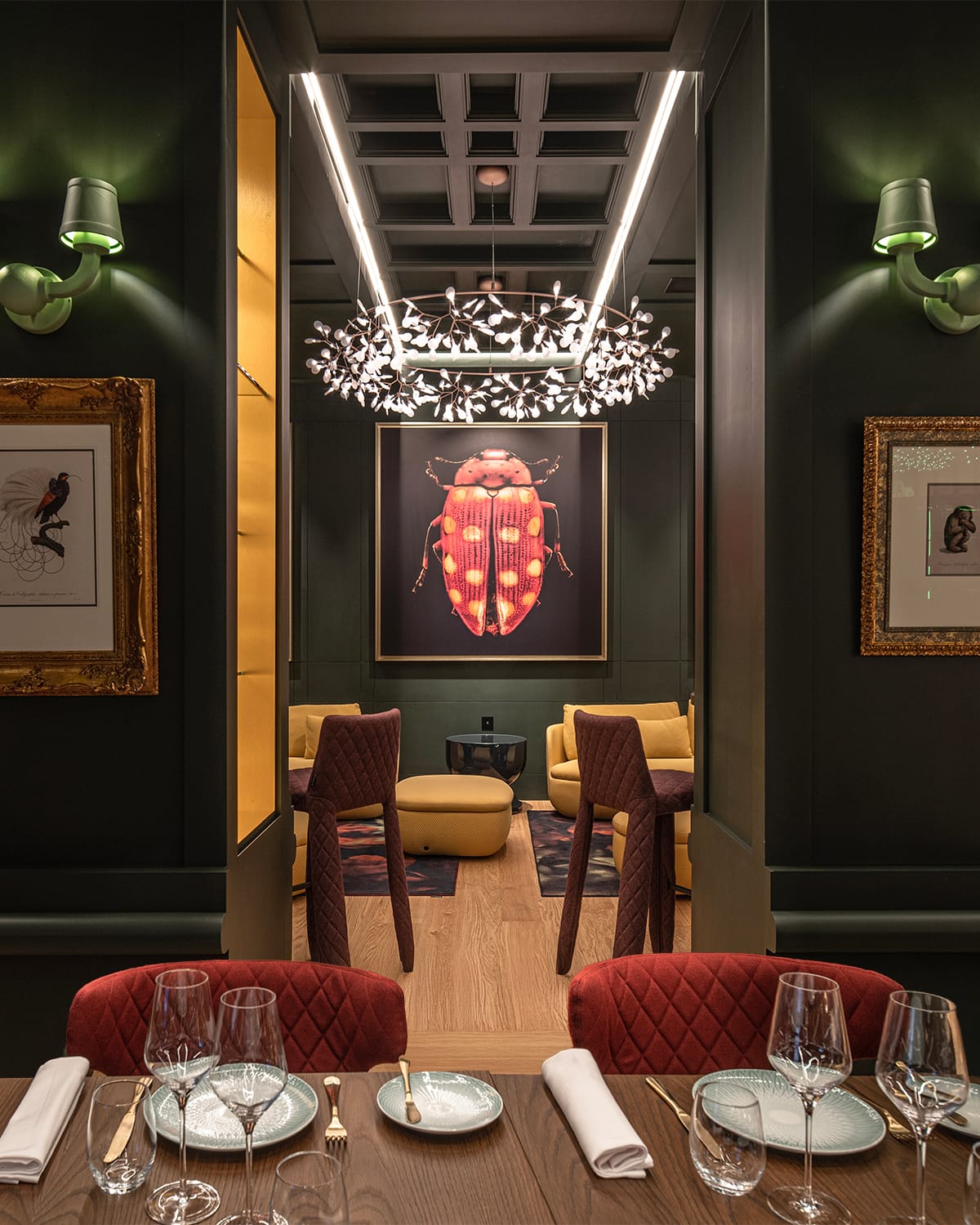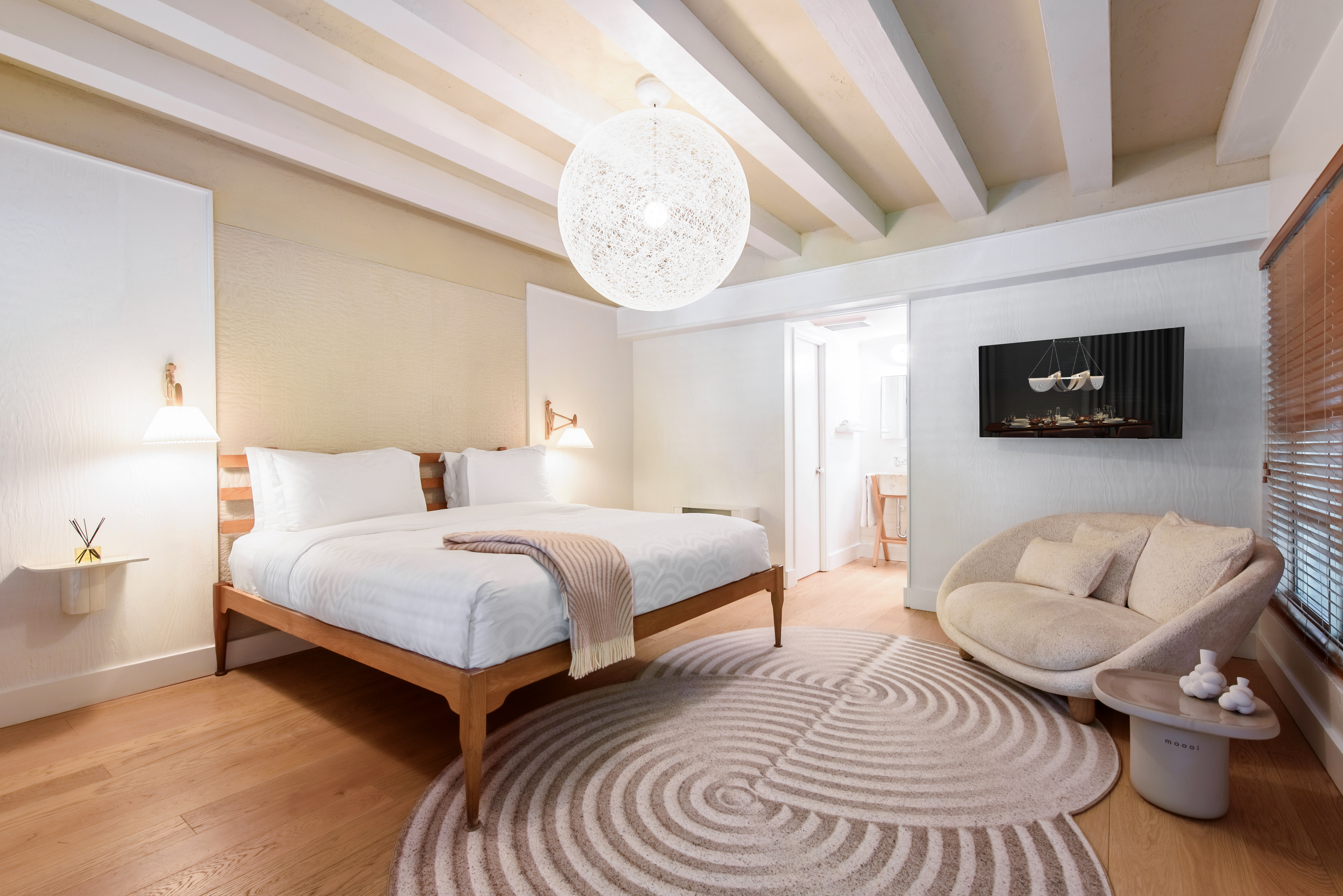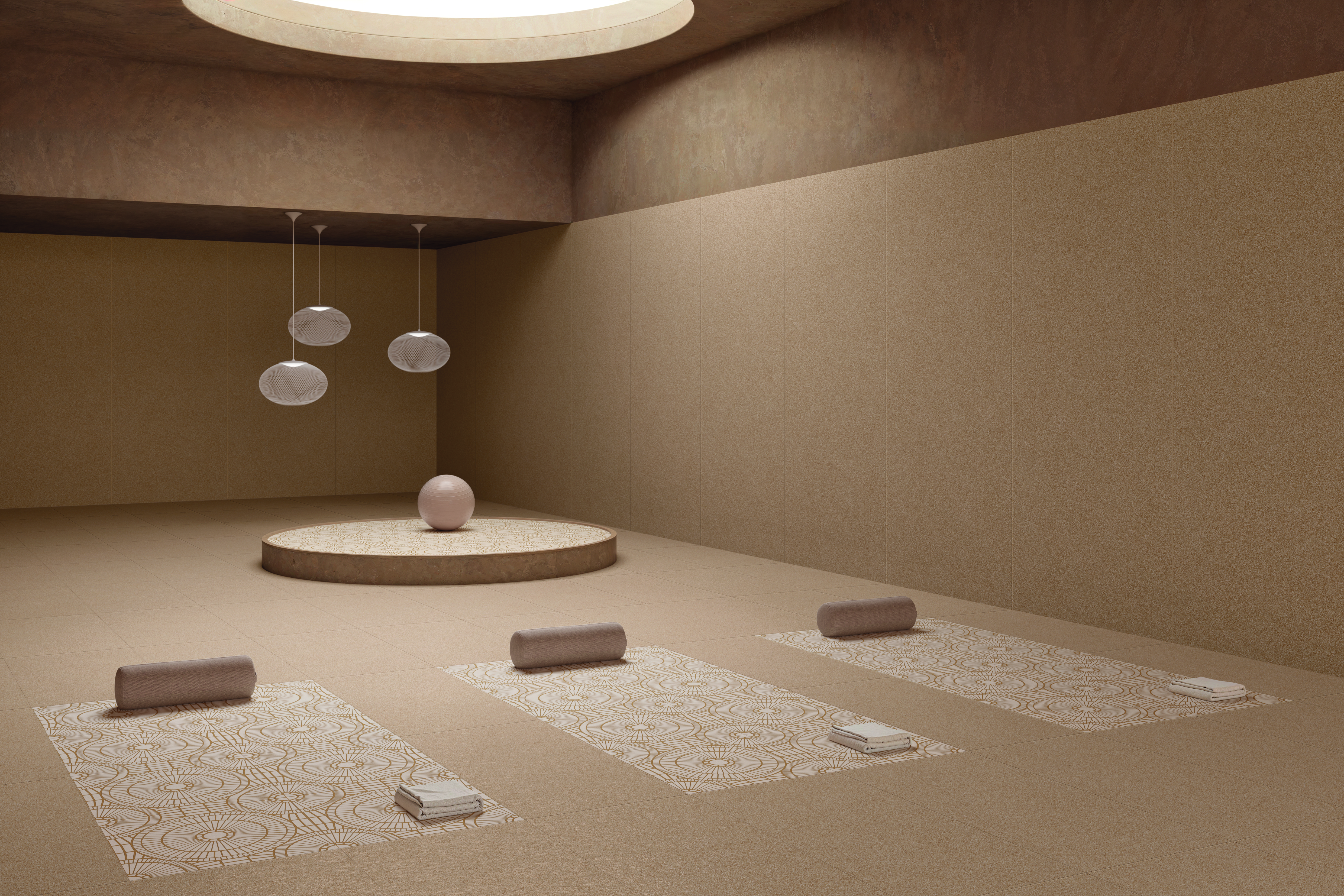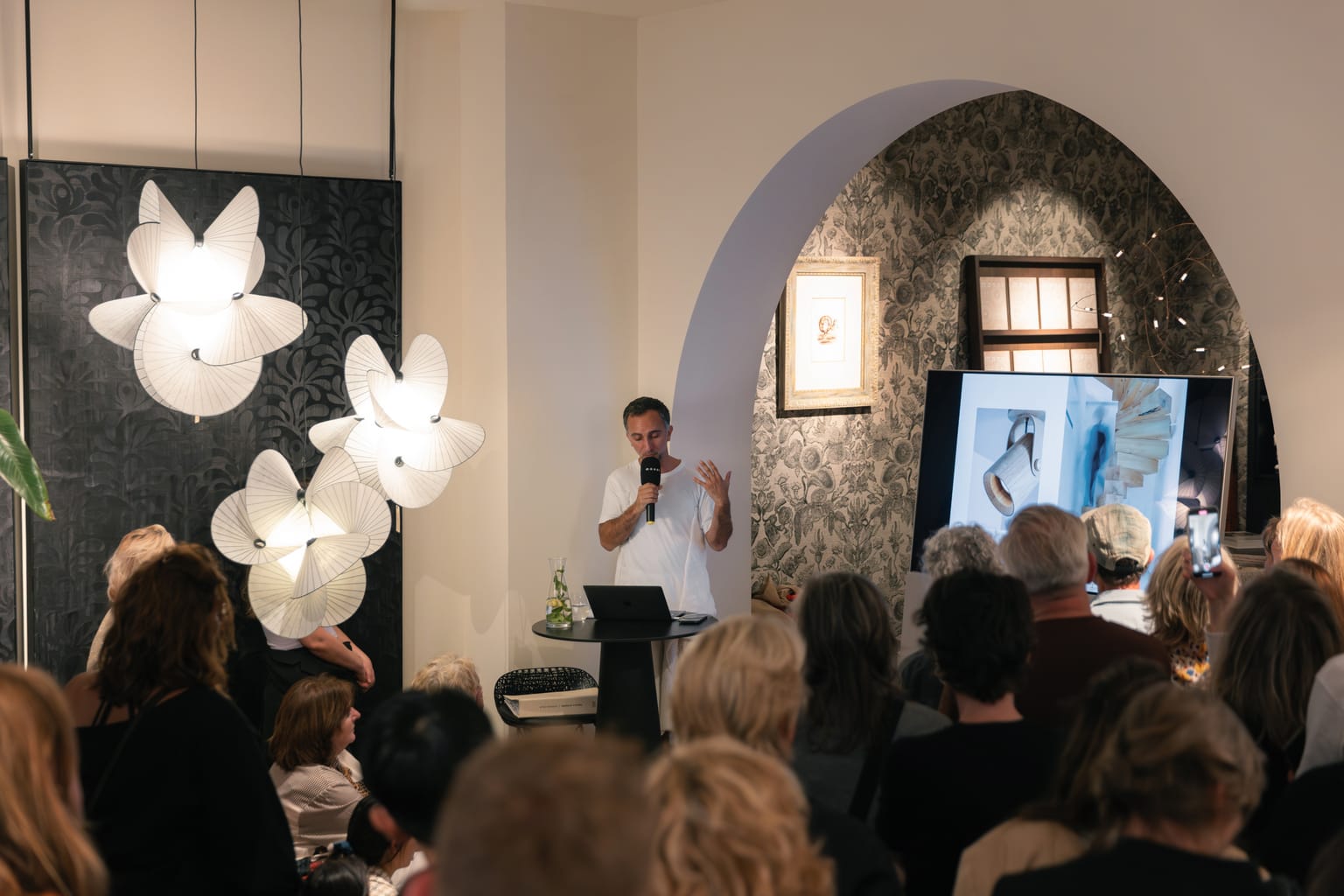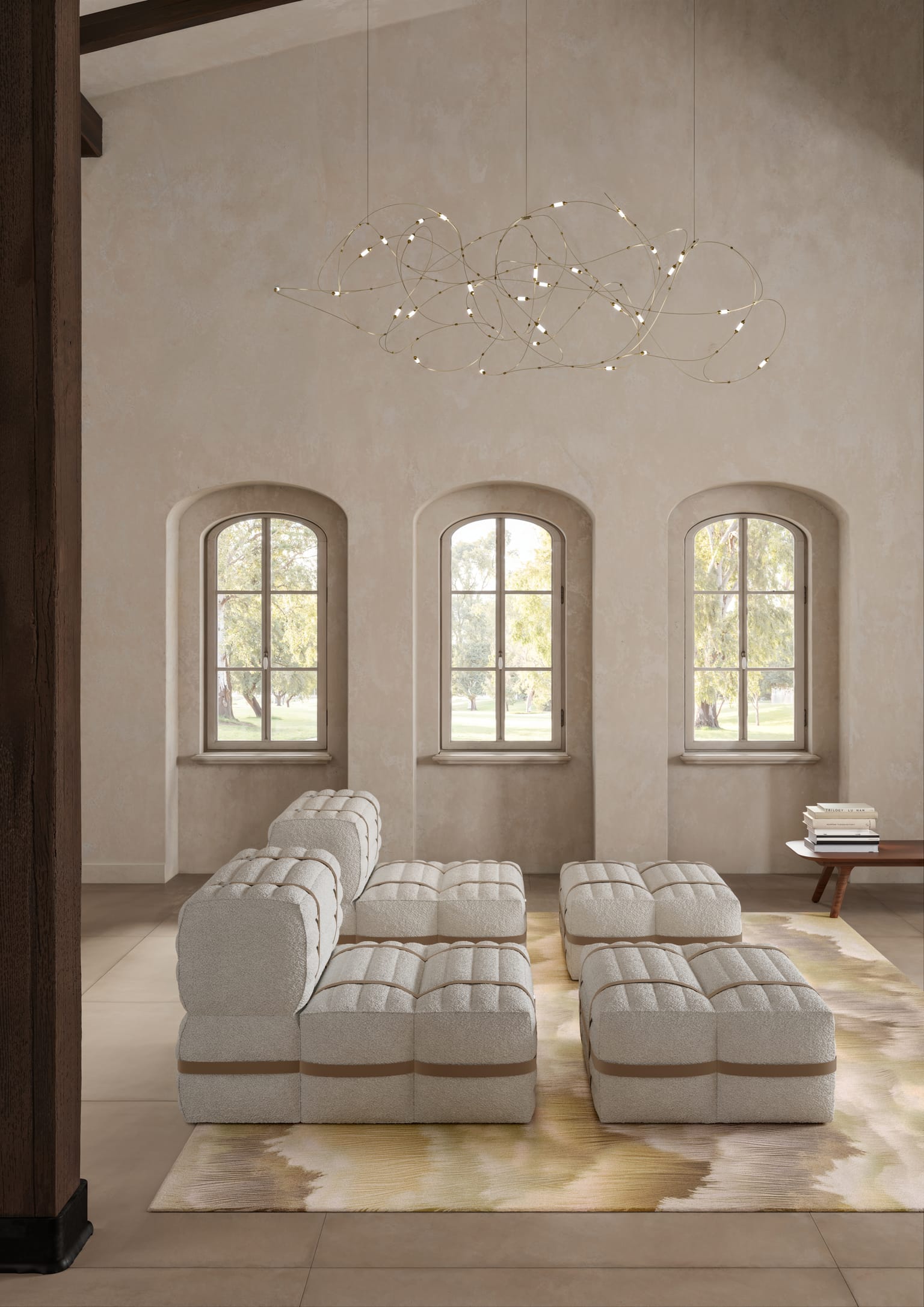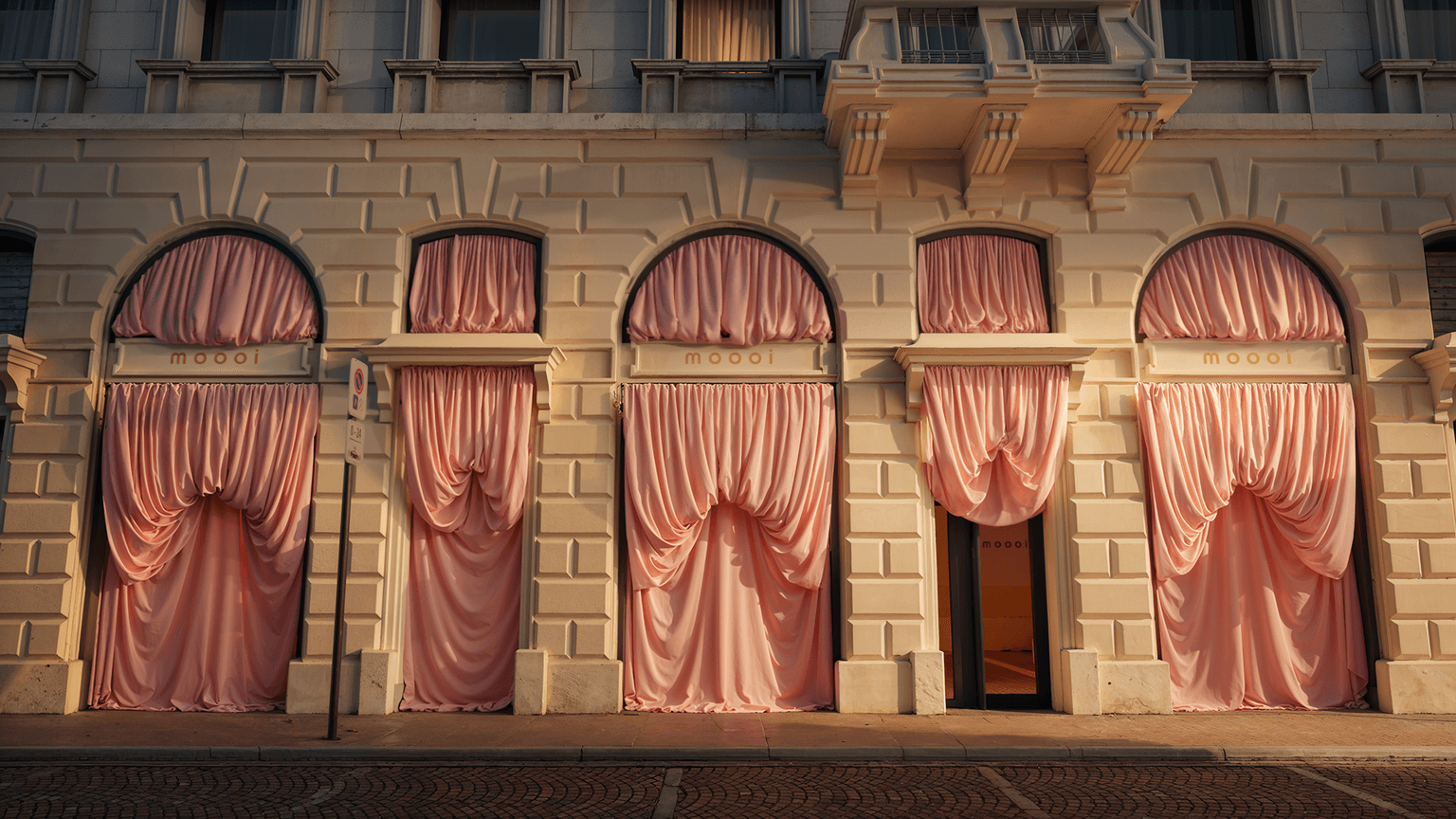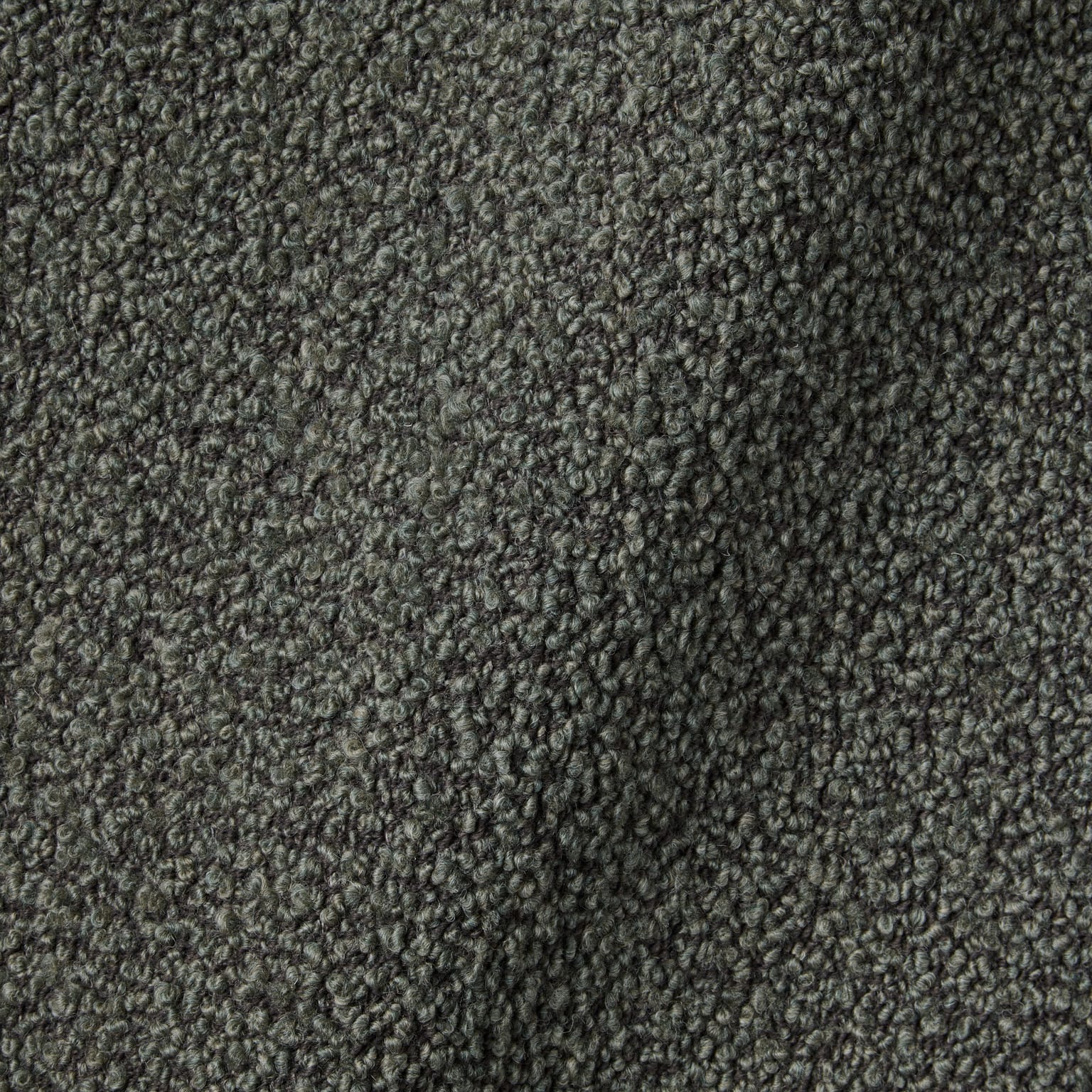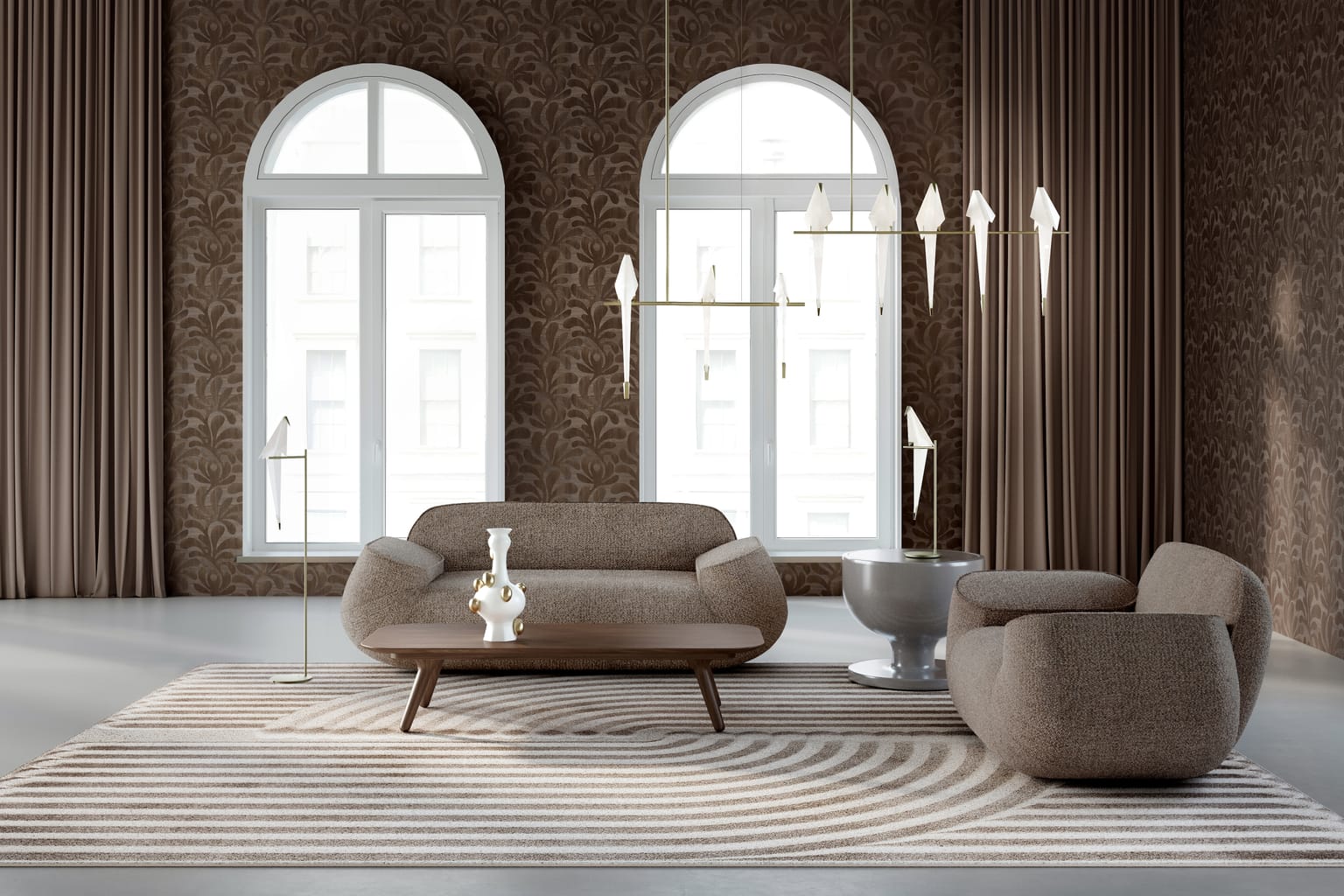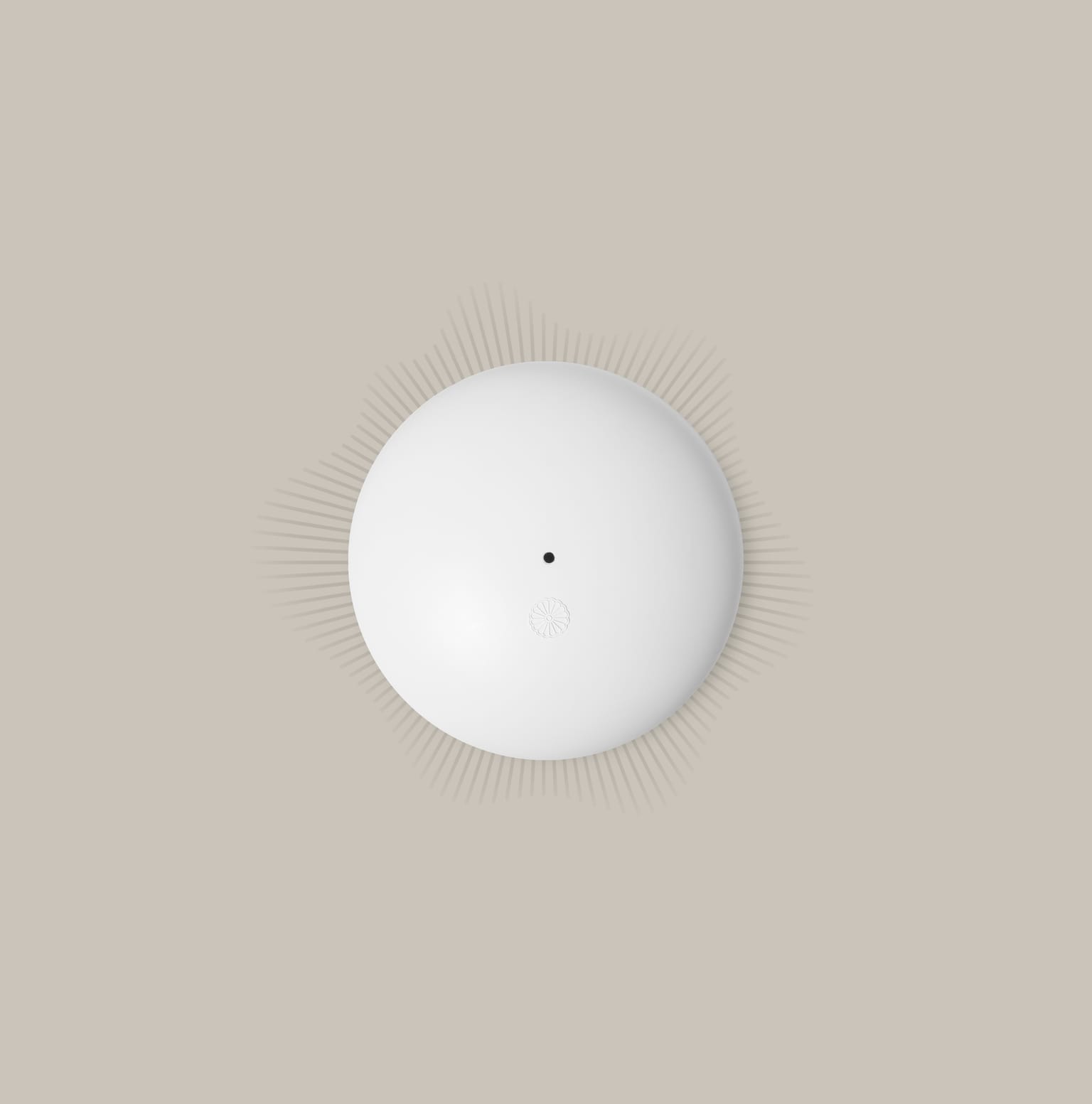Architect Tiago Rebelo de Andrade—of the acclaimed Lisbon-based studio Rebelo de Andrade—shares the story behind transforming a 1920s Beaux-Arts building into the five-star Art Legacy Hotel in central Lisbon.
Discover how Moooi lighting and furniture helped shape each floor with a bold, narrative approach to colour, history, and atmosphere.
Listen to the full audio of the talk here.
A Family Studio — Passion First
Thank you very much Moooi for having me and thank you for coming. It's a pleasure. Unfortunately, this was supposed to be a duel between me and my father. We work together, but he got a little health problem and he can't travel. But let's see if I can fit his shoes.
We are a family studio. We started with my father in ’83. We redid all our branding around 2000 because we felt we needed a different approach. Today we’re presenting one of the projects we’ve worked on since 2016.
This is a phrase we use a lot—mostly for ourselves—because if we are not passionate about what we are doing, it’s very difficult to do good architecture, good design. Love story. Technical problems—it happens. Sorry, I need to keep touching the… It’s always with the Portuguese that this happens. Are you listening, am I speaking?
We use this phrase every time we get a new architect. We do interviews and if a person isn’t passionate about working in this area, working with us, it’s not a good fit. It’s not about the money—yes, we pay. We are one of the biggest‑paying studios in Portugal because we want to keep the best with us. If we’re not passionate, I don’t believe we can do good architecture.
Project Start — Building & Scope
Today I’m going to show mostly the project we did with Moooi. It started in 2014 with a client—very complicated, but a nice client for trusting us. We had an amazing building in downtown Lisbon, belonging to a family that worked with insurance, health, etc. The building was really destroyed over decades; we had to redo all the interiors. Everything you’re going to see here was done by us.
This is me, my father, and my brother‑in‑law. I introduced him to my sister so we forced him to work with us so that we can always see what he’s doing. This is an image from our office—400 m² in the middle of Lisbon. Because of my father’s work, we do a lot of refurbishment of old buildings, hotels, and resorts.

City Hotel vs Resort Hotel — Guest Experience
What we tried to do in Art Legacy: we’re used to working with Six Senses in Douro; we’re working with them in Mozambique. A hotel in a city is completely different from a hotel in a resort. In a resort, the director worries 24 hours about guest experience. In the city, he worries about 12 hours—sleep, nice breakfast—and then guests go out to see the city and museums. In this hotel, we wanted to achieve a nice experience different from a typical city hotel.
Why Moooi — Curiosity & Return Stays
That’s why we picked Moooi to work with us on interior design. We wanted guests who, when they come and see a booking, think: I want to go to this hotel because there’s a nice room there. And then they get curious and want to come back again because they tried the red room and not the yellow room.
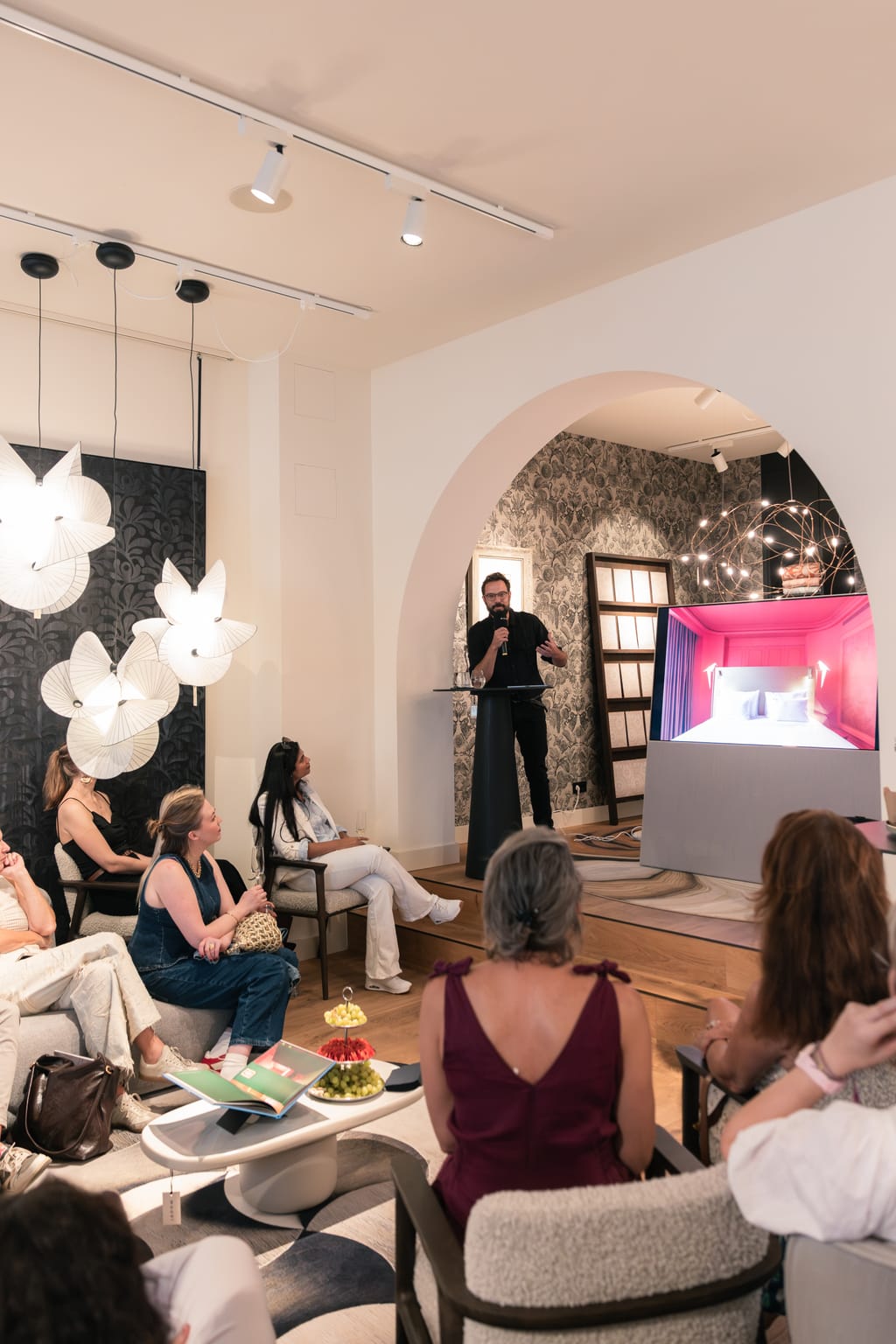
Heritage & Façade — Reinstating Beaux‑Arts
Here are some images. The building was ruined over decades. Big openings and chain stores destroyed the whole building. We had to redo it so it felt like the Beaux‑Arts style of this type of building. It was a challenge: Portugal, cultural heritage, centre of Lisbon, all the licenses, the client—many stories behind it.
We did this… not a balcony… yes, exactly. The local “Junta de Freguesia,” part of City Hall that approves things, didn’t want us to do it. They wanted blue or a centre colour. We did it architecturally to get the project approved. Even the rooftop—we had to reinvent it because it was completely destroyed outside.
Arrival — Lobby & First Impressions
This is an image from the lobby. You enter the hotel and you know exactly what you’re going into—“expect the unexpected,” as Moooi says. Everything—furniture, carpets, wall finishes—was done with Moooi. Nothing of this existed, even the ceilings. We redid everything in carpentry, working with very good Portuguese companies to keep the same style as the exterior.
Integrated Systems — Hidden Sound & Calm
Even the sound was hidden in the walls. We didn’t want anything that caused noise to the project.
Art & Identity — Extravagance Meets Beaux‑Arts
Even the art—we picked art from Moooi because with this brand we could achieve the feel. It’s a Beaux‑Arts hotel and Moooi has this extravagant look with furniture and everything, so we wanted the same feeling when you enter—that it’s part of the history and identity of the building. We achieved that with this brand.
Lobby‑Restaurant Flow — Compact City Plan
This is part of the restaurant experience. In the lobby you also have the restaurant. Typical in Portuguese city hotels where the area isn’t very big. We wanted the whole experience as you enter—breakfast, lunch, etc. The client wanted an open kitchen. Open kitchens can be ugly and dirty, so we reinvented it so it feels part of the hotel—an open kitchen with our look.
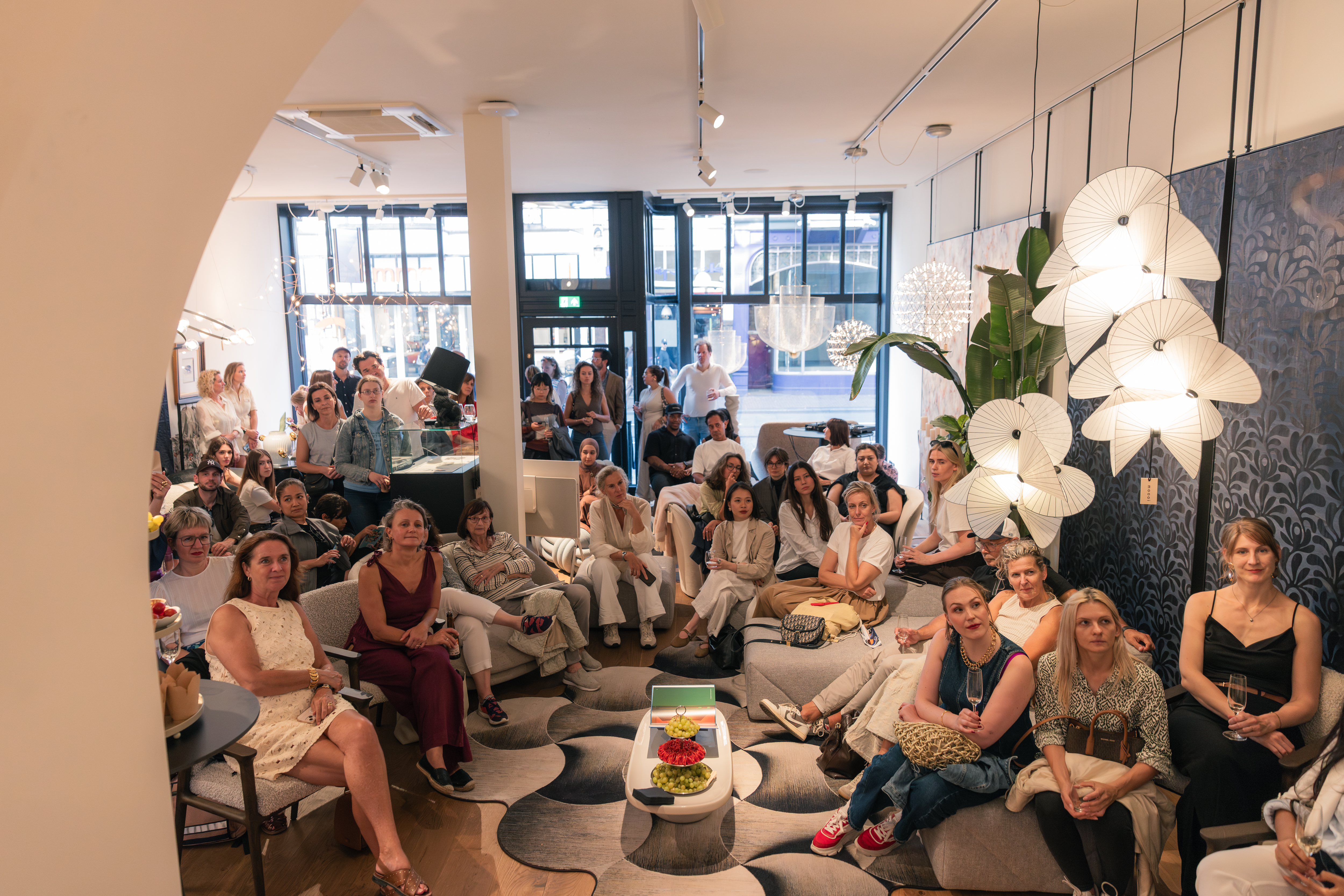
Wayfinding by Colour — Corridors as Characters
Then the corridors: every corridor has a different colour. It creates identity in each corridor—you feel like you’re in The Shining, you could have two twins there. But for guest experience, you know exactly where you are.
There are 52 rooms and every room is different. The same room with the same layout on one floor is different from the room above on the next floor with a different colour. We wanted this imagery—special, with history and identity. We work a lot with the culture of place. We never want to do the same project in a different place. We build a story—storytelling—and here we told a different story on each floor.
Rooms by Hue — Red, Yellow, Blue, Green
Here you see two rooms: one red, the other yellow. On the second floor: one blue, the other green.
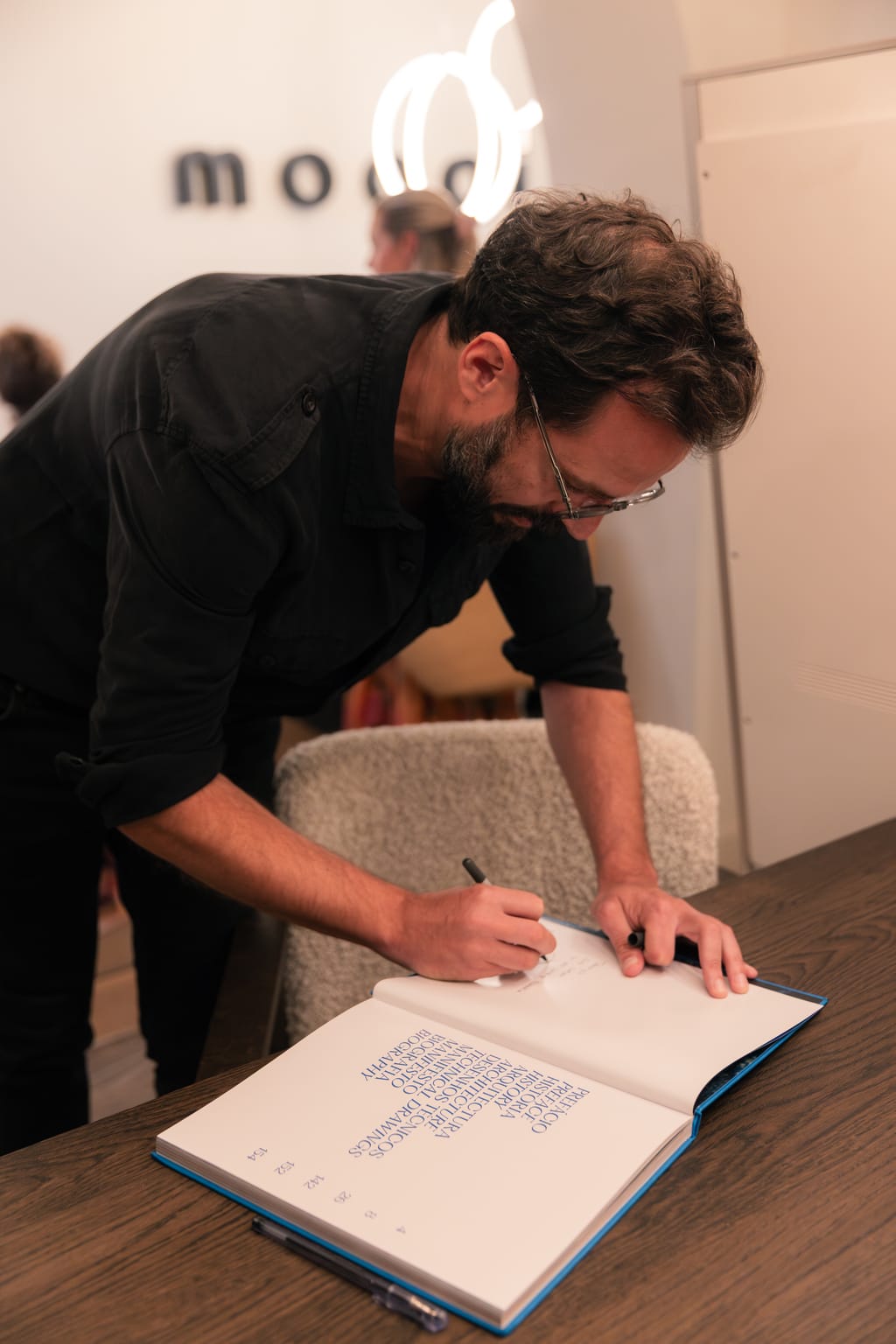
Custom Pieces — Small Rooms, Big Effect
Some parts we couldn’t do with Moooi—like the beds—because the bed design wasn’t available. So we designed some furniture to achieve the same look and feel. The rooms are small, most of them, so we had to use design to make them look bigger and more interesting.
Client & Outcome — Michelin Star & ADR
The client is a shoe manufacturer—owns shoe stores and hotels, but not of this type. He wasn’t used to high‑luxury hotels. It was very nice for him: his first Michelin star in a hotel. Prices went up; he wasn’t expecting rates to go so high—yesterday the hotel was 600 euros a night. Architects and designers also help clients earn money so they can hire us again. There’s nothing worse than a client spending a lot and not wanting to work with you again. We’re happy most of our clients are “freguês”—returning clients.
Long Relationships — Psychology of the Brief
It’s hard to have the same client again—someone builds a house once. With funds doing buildings or hotels, the relationship lasts years. We are almost psychologists of the clients—we even learn how couples use the bathroom. There’s a famous architect in Portugal who says: I’m not building more houses—my clients separate because they discover each other during the process. It’s psychological; sometimes you don’t “get” them. And then we have the yellow room.
Next Phase — Bathrooms & Future Rooms
At the time, Moooi was still developing tiles. The client wants to do another hotel across the quarter—50 more rooms with Moooi. This time we’ll use Moooi products in the bathrooms too. It was an amazing trip. As a shoe manufacturer, he bargains everything. Moooi helped us achieve this quality. In Portugal it’s not easy—our economy is cheaper than here—so to achieve this you need good teams and players.
Master Suite & Roof — Views Above
This is a view from the master suite—on the higher level roof.

Colour Pairings — Rooms vs Bathrooms
Then the green bathroom. Maybe in the next rooms, bathrooms will be different colours from the beds. We haven’t finalised the last layout. There’s a video we did with Moooi about how we worked and the hotel. I can share the link afterwards.
Design Beliefs — Time, Aging & Sustainability
This is what we do—we try to have every project tell a story. Architecture outlives us. If you’re talking about sustainability, there’s nothing better than good design. Sometimes clients say: I want solar panels. You can have solar panels, but if the building is ugly, there’s no sustainability—after 10–15 years the building is destroyed.
I know a building I saw behind my parents’ house that is now being demolished—30 years. How can we be sustainable without great design and quality products? It’s not easy to see if a brand or project will be sustainable—only time tells. In this hotel, I believe it will age really well. Architecture needs to get old—like people. It’s about how we age, not only the sustainability part.
Textiles embrace drawing and illustration, especially carpets — a Moooi signature. Black‑and‑white drawing, sketching, doodling: Faye Toogood is known for sketched interiors, rugs, and objects. Organic neutral interiors pair with rugs like Moooi’s Pure Shell by Janna Kleine‑Kamer — calm by name and nature.

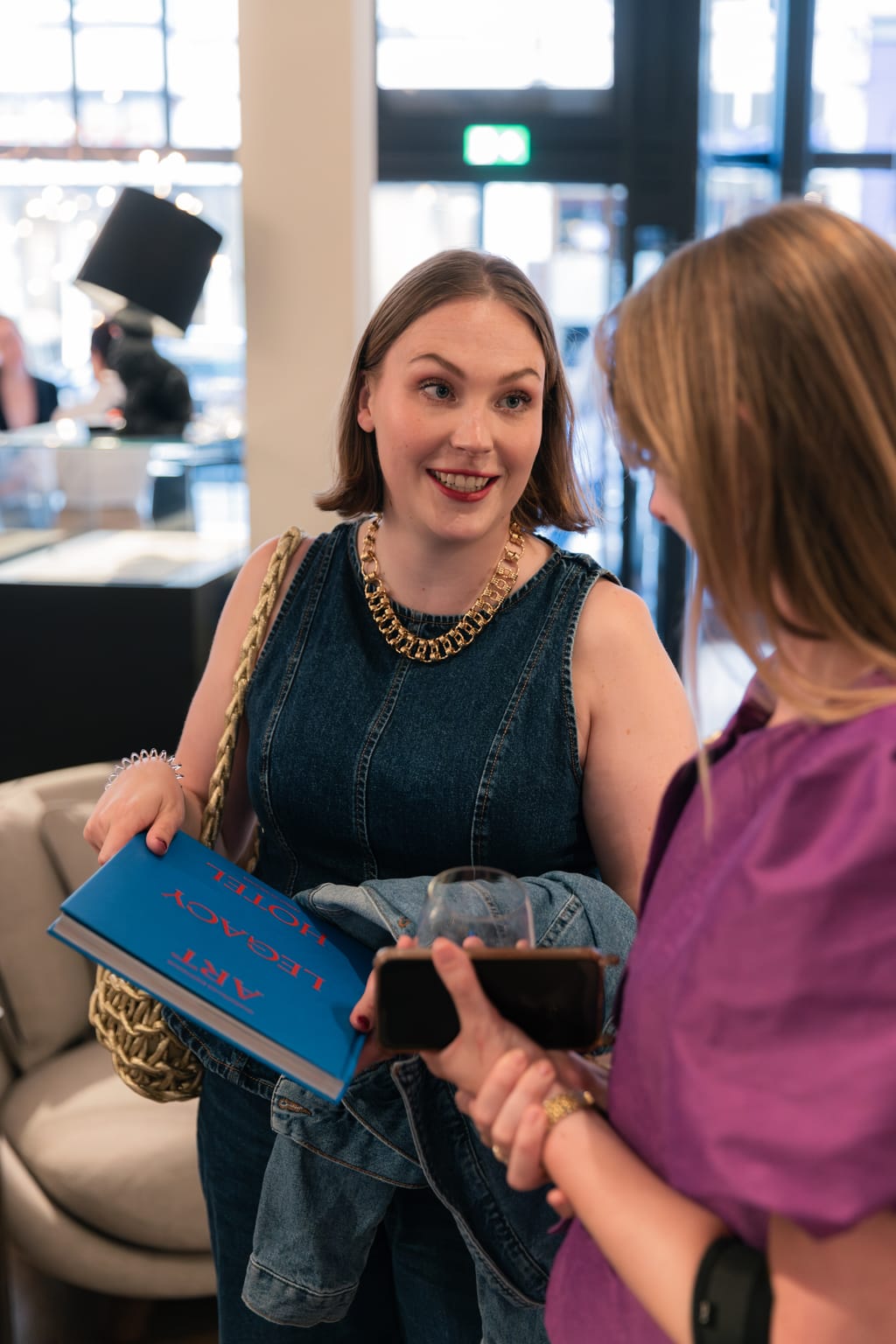
Q&A Highlights
What original details survived inside?
Inside, because it was an office, they destroyed it—old Lisbon offices full of dark wood and glass. When we arrived, there wasn’t much to keep. On the first floor we had to redo the stonework. We’re investing in 3D printing, CNC, and 3D scanning. In downtown Lisbon this typology is special. Other buildings follow the Pombalino system—like Amsterdam’s tiled façades—but this one is different, more neoclassical. We reshaped the whole first floor. We photographed a nearby building with lions, 3D‑printed them, and sent to a stone worker to carve for the entrance. Inside there wasn’t much of architectural relevance to preserve. There was pinkish shiny stone we had to replace. It took five years to do the project and two years to build. The client used his own contractor—more used to retail—so we designed construction details on site. A nightmare, but good in the end.
Why the monochromatic floors?
We like Wes Anderson movies. It was to create different experiences throughout the hotel. Moooi has different colours too. Initially we wanted a room per window—it was impossible (rooms would be too narrow). We initiated contact with Moooi because it’s a strong brand for us. We picked red, blue, yellow, green to create interesting rooms and floors—and yes, Wes Anderson.
Favourite element — lighting, carpets, or furniture?
The lighting. We think it’s the best in the world. We’re in love with what we do and we feel the brand is the same. Some pieces don’t fit this hotel (that couch), maybe in the next phase. Hotels are about quality: staffing, electricity, and maintenance are the highest costs. With a very good brand, you’re sure pieces last a long time. It’s all about quality in the end.
Heritage constraints as inspiration?
Constraints help. It’s harder to start on a flat, “blank” project with no restraints—nothing to connect to. Downtown Lisbon’s architecture inspires us. Clients push for PVC or inox windows for low maintenance; we argue for wood—if you ruin PVC, you replace the whole window; with wood, you repair. This building differs from other local types—nearby we have Neo‑Gothic, Neoclassic—those references inspired the interior.
Biggest challenge in Lisbon?
The client—yet you can’t do good projects without great clients. Detailing makes or breaks projects. Timing, and working with a builder used to small stores, not this type of building. Colour was hard: a red wall is different on wood than on plaster—lots of testing. We once specified a dark blue in Cascais; tiles arrived purple, same pigment, but different outcome. This hotel is different from our other projects (see our eco‑resort at Pedras Salgadas). We keep challenging the team culturally—weekly talks with designers and architects; we want 360° vision. We invest in software and technology and in hand drawing. We work with BIM, AutoCAD, Rhino 3D; we don’t want to be surpassed by software—or AI.
